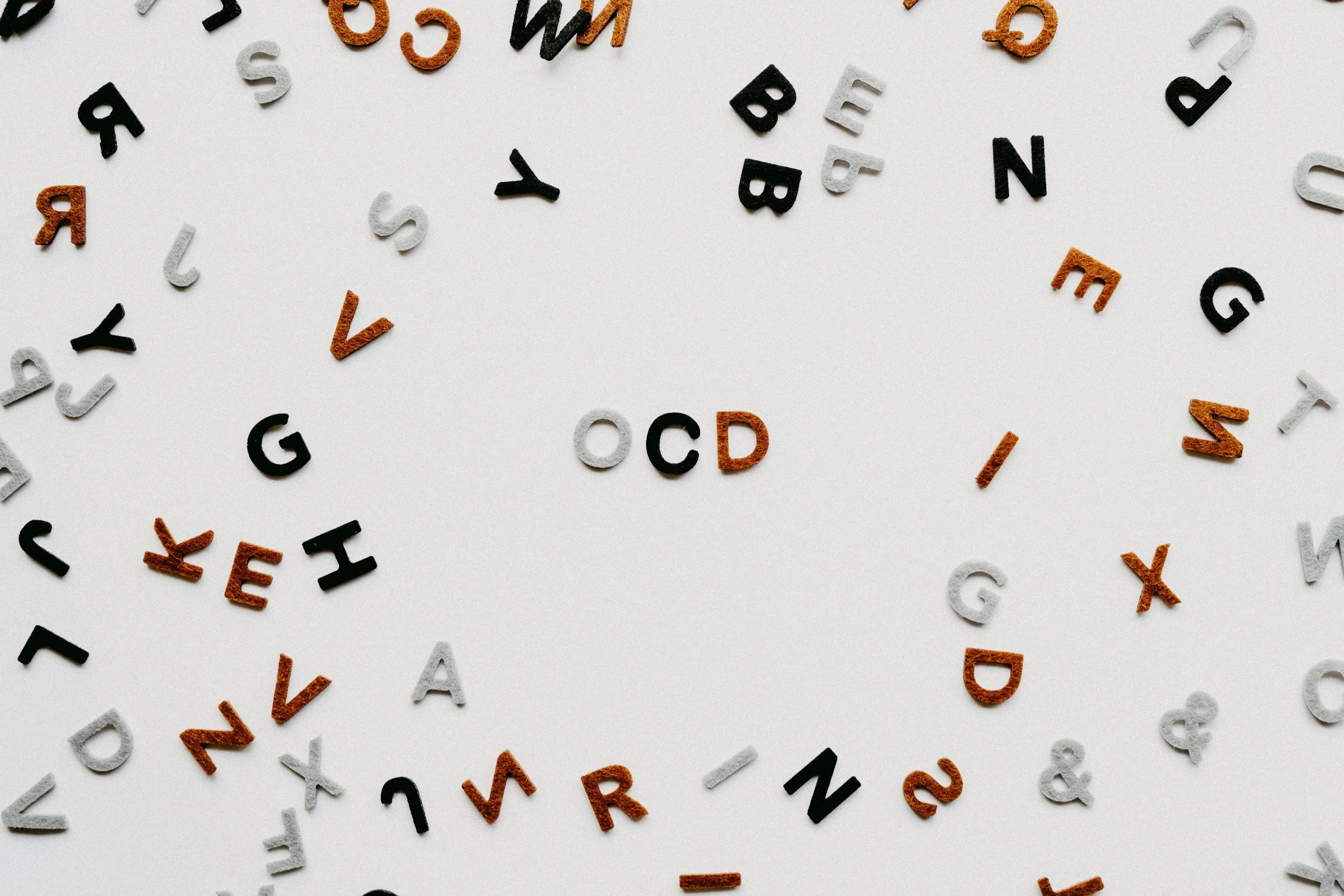🌱Finding Calm Within: The Power of Safe Space Visualization
Life can be overwhelming. Whether it’s the noise of the outside world or the storms inside our own minds, we all need a place where we can feel grounded, calm, and safe.
That’s where safe space visualization comes in. It’s a gentle, imaginative practice that invites your mind and body to pause, soften, and settle. Whether you're dealing with anxiety, trauma, or just a stressful day, this technique can help you reconnect to your sense of safety and inner peace.
Let’s explore how it works—and I’ll guide you through your own visualization at the end.
🌱When Listening Is the Solution: Why We Don’t Always Need to Fix It
Have you ever found yourself sitting with a friend or loved one who’s going through something hard—maybe they're stressed, heartbroken, or overwhelmed—and before you know it, you're rattling off advice like a human instruction manual?
“You should leave that job.”
“Have you tried talking to them?”
“You just need to think more positively.”
We all do it sometimes. Offering advice can feel like the most loving thing—after all, we just want to help. But often, the most healing thing we can offer isn’t a solution at all. It’s presence. It’s empathy. It’s listening without an agenda.
Let’s explore why being solution-focused too quickly can actually miss the mark—and what a more supportive approach looks like instead.
🌱More Than a Label: Narcissism, Trauma, and the Mental Health Layers Beneath the Surface
"Narcissist" is a word we hear a lot these days. It shows up in conversations about exes, bosses, parents, and influencers—and often as a shorthand for anyone who seems self-absorbed or emotionally unavailable. But in clinical mental health, narcissism has a very specific meaning. It’s more than just selfishness or vanity. Understanding this distinction can help us navigate relationships with more clarity and compassion—and know when to seek support.
🌱Boundaries Are Self-Compassion: Why Saying No is Saying Yes to You
We often talk about boundaries—not because they’re easy to set, but because they’re essential for emotional wellness. Boundaries are the invisible lines that protect our time, energy, and emotional safety. They define where we end and others begin. Yet for many of us, setting them can feel deeply uncomfortable or even guilt-inducing.
In this blog, we’ll explore different types of boundaries, why they can be so hard to set, and how to start building stronger ones—gently and intentionally.
🌱Wait, Compliments Can Hurt? Why Praise Sometimes Fuels Shame — and What Helps Instead
Have you ever given someone a compliment — or received one — and instead of feeling encouraged, it somehow made things… heavier?
Maybe someone told you, “You’re so smart,” and it left you wondering what would happen the next time you didn’t have the answer. Or maybe as a parent, you’ve said, “You’re such a good kid,” only to watch your child shrink when they mess up. It’s confusing, right? Because praise is supposed to build people up. But sometimes, it doesn’t.
Let’s talk about it. Because the truth is, even the kindest compliments can unintentionally create pressure and that pressure can turn into shame.
🌱Guilt vs. Shame: Understanding the Difference — and How to Break Free
Have you ever made a mistake and felt a pit in your stomach?
Or felt like something about you was just...wrong, deep down?
That heavy feeling could be guilt or shame — two emotions that often get tangled together but are very different.
Let’s talk about what each one really is, where shame comes from, how it impacts us, and—most importantly—how you can start healing.
🌱Breaking the Cycles of Anxiety, Depression, and Avoidance
We all go through ups and downs, but sometimes it feels like we’re caught in a loop that’s hard to escape. If you’ve ever felt like anxiety, depression, or avoidance keeps dragging you back in—even when you’re trying your best—you’re not alone. These mental health challenges often follow predictable patterns or cycles.
The good news? Once you understand the pattern, you can start to break it—with the right tools.
Let’s walk through the cycles of anxiety, depression, and avoidance—and explore ways to loosen their grip.
🌱Meeting Your Inner Family: A Guide to IFS Parts Work
Have you ever felt like you were arguing with yourself?
Like one part of you wants to take a risk, but another part is slamming on the brakes?
If you’ve ever felt torn inside, you're not crazy—you’re human. And there's actually an explanation for this called Internal Family Systems (IFS) therapy.
Let's dive into what IFS is, how it can help you better understand yourself.
🌱What’s Your Attachment Style?
Ever found yourself texting someone... then staring at your phone wondering why they haven’t replied... spiraling a little... then telling yourself you definitely won’t care next time? Or maybe someone gets too close and suddenly you’re overwhelmed, craving space, and trying to figure out how to escape without hurting anyone.
Yup. That might be your attachment style talking.
Attachment styles are the invisible scripts we carry when it comes to connection. They influence how we love, how we trust, how we get close, and how we protect ourselves from getting hurt. These patterns usually begin in childhood based on how our caregivers responded to our emotional needs—but they don’t stop there. Trauma, heartbreak, and even adult relationships can shape and shift our attachment over time.
The best part? You can absolutely grow toward secure, fulfilling connection—no matter where you’re starting.
🌱Understanding OCD: Beyond the Stereotypes and Into Real Healing
“I’m so OCD.”
How often have we heard that tossed around in everyday conversation—usually referring to someone who likes things clean or perfectly organized?
But if you’re living with Obsessive-Compulsive Disorder (OCD), you know it’s so much more than being tidy or having quirky habits. OCD can feel like a mental loop that hijacks your peace, your time, and sometimes, your sense of who you are.
Let’s break it down in a human way—what OCD really is, how it can show up, and powerful (but compassionate) ways to start working with it.
🌱The Window of Tolerance: Advanced Tools to Expand Your Emotional Bandwidth
Ever feel like you're “too much” or “not enough” all at once?
Like the world is either overwhelming or numbingly quiet?
This is your nervous system sending signals that you're outside your Window of Tolerance—that sweet spot where you can manage emotions, think clearly, and feel connected. And when trauma or stress shrinks that window, life can feel like a constant wave of reacting or shutting down.
The good news? You can retrain your nervous system to widen that window—and even enjoy the ride.
Let’s go deeper with advanced, alternative strategies for regulating your system in meaningful ways.
🌱Creating Healthy Habits (Without Burning Out): A Gentle Guide for When You’re Struggling
Let’s be real—building healthy habits sounds simple, but when you’re overwhelmed, anxious, exhausted, or healing from trauma, even the smallest task can feel huge.
If you’ve been stuck in the cycle of “I’ll start Monday” or “Why can’t I just get it together?”, you’re not alone. The truth is, creating new routines takes time, patience, and a whole lot of self-compassion. You don’t need to change your whole life overnight. You just need a place to start. Here’s how to gently begin building healthy habits—without pressure, shame, or unrealistic expectations.
🌱The Hidden Side of High Achievement: Finding Balance Beyond the Hustle
At first glance, being a high achiever sounds like a great thing—and it can be. You're driven, goal-oriented, and often seen as the one who “has it all together.” But if you’re a high achiever, you probably know there’s a lot more going on beneath the surface. Behind the awards, checklists, and 3 a.m. work sessions, there can be anxiety, perfectionism, fear of failure, and even a sense that no success is ever quite enough. So let’s talk about it—what fuels high achievement, how it can affect your mental health, and how to keep your ambition without losing yourself.
🌱Managing Trauma Triggers: Gentle Coping Skills for Deep Healing
Trauma has a way of leaving fingerprints on our daily lives—sometimes in obvious ways, and sometimes in subtle, invisible patterns that emerge when we least expect them. A sound, a scent, a place, even a passing comment can suddenly transport us back to a moment that hurt. These moments, known as trauma triggers, can feel overwhelming—but learning how to respond to them with care and skill can be life-changing.
🌱 Trauma and the Brain: How Healing Changes You From the Inside Out
Trauma has a powerful impact—not just emotionally, but physically, too. It literally changes how the brain works. If you’ve ever felt like your reactions to stress or emotions don’t “make sense” after something painful happened, there’s a reason for that. You're not broken. Your brain has been trying to keep you safe.
🌱 Reparenting Your Inner Child: A Gentle Path to Healing
Have you ever reacted to something in a way that felt… bigger than the situation deserved? Maybe a comment stung more than it should, or you felt abandoned when someone canceled plans. Often, those tender, reactive parts of us aren’t irrational — they’re wounded. They’re echoes of a younger version of you, still longing to be heard, held, and healed.
🌱Building Stronger Connections Through Effective Communication
Effective communication is the foundation of thriving relationships—whether personal, romantic, or professional. The way we speak, listen, and respond deeply influences the quality of our connections. When communication is healthy, conflicts become manageable, misunderstandings decrease, and intimacy or teamwork grows stronger. In this post, we’ll explore practical tools for improving communication, including “I” statements, fair fight rules, active listening, and how to avoid common pitfalls.

















